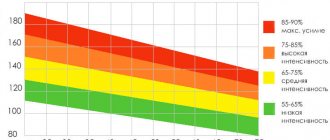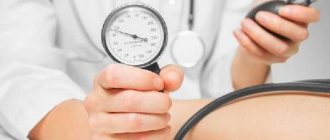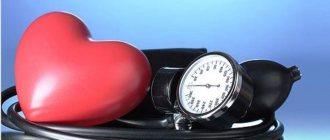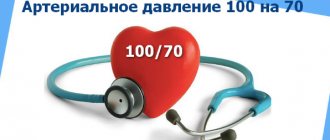Phlebology is a subsection of medicine that studies the structure of venous vessels, their function, as well as the processes of formation of venous pathologies. Phlebology develops methods for diagnosing, treating and preventing vein diseases.
A phlebologist is a specialist in the field of phlebology. Most often they specialize in pathologies of the veins of the lower extremities.
What is the difference between a vascular surgeon and a phlebologist?
When any visible manifestations appear on the veins, the skin of the legs, or heaviness in the legs, the patient is often faced with the question of which specialist should he turn to: an angiosurgeon (vascular surgeon) or a phlebologist?
It seems to the patient that there are no differences in them, but in fact these are two completely different specialists who treat various pathologies of the body’s vascular system. If angiosurgeons are involved in the diagnosis and treatment of the entire vascular system of the body, then phlebologists primarily deal with diseases of the veins of the lower extremities.
Considering the frequency of occurrence (more than 30% of the general population), the high risk of disability and mortality from thromboembolic complications, a separate section of angiosurgery was identified in cardiovascular surgery - phlebology, which made it possible to study venous pathology in more detail and make great progress in the methods of its diagnosis and treatment. and prevention.
Angiosurgeons perform open and endoscopic interventions mainly on arterial vessels, such as bypass surgery, stenting, endoprosthetics, etc. As for the venous system, angiosurgeons take a more radical position, taking into account less awareness in this area.
Unlike angiosurgeons, phlebologists consider the problem in more detail and determine the indications for each type of surgical or conservative treatment depending on the medical history, severity of the disease, the presence of complications, and so on based on the totality of individual characteristics in each individual case.
Phlebologists treat: thrombophlebitis, varicose veins of the lower extremities, trophic ulcers, spider veins, chronic venous insufficiency and phlebopathy. If a patient with obvious manifestations of disease of the veins of the lower extremities turns to a vascular surgeon, then most likely the doctor will refer him to a phlebologist.
Which doctors can help?
The choice of doctor's specialization depends on the clinical picture formed during the disease. So, these are mainly therapeutic doctors: neurologist, phlebologist, cardiologist. These are also surgeons, for example, an angiologist. These doctors study the clinical signs of vascular diseases, diagnose them, and treat them.
However, in order for the attending physician to cure, the cause of the pathology must first be identified. Which doctor checks blood vessels? Diagnostics can be prescribed by any clinical specialist who needs data on the functioning of cerebral vessels. The vessels are directly checked by a radiation or functional diagnostics doctor who examines the arteries and veins using ultrasound or magnetic resonance imaging using angiography.
Neurologist
A neurologist is a specialist in the field of neurology. He studies diseases associated with the pathology of the entire nervous system (central and peripheral).
You should contact a neurologist if there are signs of neurological diseases, the cause of which lies in the blood vessels. These are the following signs:
- Often headaches occur with high blood pressure.
- Mental activity decreased, attention became distracted, and it became more difficult to remember. It is difficult to control emotions, my sleep is upset.
- Asthenic syndrome: painful fatigue, rapid exhaustion from simple work, impatience, restlessness, intolerance to sound, light and smell, irritability, emotional lability. What is the clinical picture, for example, of multiple sclerosis.
- Increased intracranial pressure: headaches, dizziness, nausea, vomiting, painful urination and coughing, decreased visual acuity.
- Signs of ischemic and hemorrhagic strokes: impaired consciousness, headache like a blow to the back of the head, frustrated speech, blurred vision, loss of sensitivity, partial or complete lack of muscle strength in the arms or legs.
The clinical picture of neurological diseases of vascular origin may be accompanied by mental disorders. In this case, a head doctor – a psychiatrist – gets involved. Occurs in cerebral atherosclerosis. Signs: memory loss, amnesia, disorientation, muscle rigidity, loss of motivation for any activity.
Phlebologist
A phlebologist deals with vein diseases. Brain pathology associated with disruption of these vessels is called “venous encephalopathy.” The basis of the disease is the difficulty of the outflow of venous blood from the vessels of the brain due to cardiovascular diseases, diseases of the lungs and respiratory tract, blockage of the lumen by a tumor or hydrocephalus.
You can contact a phlebologist if you often have a headache. Periodic cephalgia with venous encephalopathy has the following characteristics:
- in terms of severity and subjective sensations, light or medium;
- the pain is aching, bursting and monotonous;
- usually symmetrical, less often localized in the occiput and parietal region;
- it hurts more in the morning than in the evening;
- the pain intensifies when tilting the head down, drinking alcohol, smoking, drinking coffee and strong tea.
With venous encephalopathy, the face usually acquires a bluish tint, lips, nose, and ears are cyanotic. In the morning there is swelling of soft tissues, mainly in the area under the eyes. You can also externally see an enlargement of the saphenous veins of the neck.
Cardiologist
A cardiologist studies the signs and treats diseases of the cardiovascular system. This specialist does not directly treat cerebral vessels, however, due to the close connection of the cardiovascular system with the performance of the central nervous system, a cardiologist can influence the dynamics of pathologies of arteries and veins, and prevent complications, because the brain is the target organ for hypertension .
The functionality of the brain is determined by blood pressure, a disease that is dealt with by a cardiologist. You should contact him if cardiac signs appear at a pressure above 140/90: cardiac pain, rhythm disturbances, heaviness in the chest.
A cardiologist can prevent or treat a hypertensive crisis. This is a condition in which high blood pressure increases the risk of vascular pathologies of the brain, for example, ischemic stroke or transient ischemic attack.
Arterial hypertension is often asymptomatic, but with the cerebral version of a hypertensive crisis the following symptoms appear:
- constant headache;
- spots before the eyes;
- vomit;
- chills, trembling in the limbs, sweating, palpitations;
- pale face;
- muscle weakness;
- mental agitation or vice versa, apathy and indifference.
Hypertensive encephalopathy against a background of constantly elevated blood pressure leads to neurological and mental disorders, for example, unsteadiness of walking, uncontrollable laughter and crying, decreased intelligence and memory, emotional disturbances or trembling of the fingers.
Which doctor should you contact if you have arterial hypertension and heart symptoms? A cardiologist. If arterial hypertension is accompanied by brain disorders, you should consult a neurologist.
Angiologist
An angiologist is a specialist who studies and treats diseases of the vascular and lymphatic systems. Angiologist is a conventional term, since formally this kind of specialist does not exist in developed countries of the world.
When talking about angiologists, we usually mean vascular surgeons. A doctor who treats surgical pathologies of cerebral vessels through surgery is called an endovascular neurosurgeon.
This doctor treats the head if vascular pathologies have arisen that can only be eliminated surgically:
- Cerebral aneurysm. You should consult a doctor if you have the following symptoms: headache in the frontal region, decreased intelligence, emotional lability, impaired sensitivity, decreased muscle strength.
- Arteriovenous malformation. It manifests itself as seizures, cluster headaches and focal deficit neurological symptoms, for example, loss of visual fields or speech disorders.
- Arteriovenous fistula. It manifests itself as headache, pulsating tinnitus, decreased vision, difficulty moving the eyes, dizziness, nausea and vomiting.
- Thrombosis of cerebral vessels. The symptoms are the same as the clinical picture of ischemic stroke.
Consultation with a phlebologist in Moscow
It is very important to consult a phlebologist in time, since diseases of the vascular system are very dangerous and can lead to serious complications. In this case, self-medication and consultations with illiterate specialists can cost you your life. Therefore, if you notice signs of pathology or are at risk for vascular diseases, you need to consult a doctor as quickly as possible, and most importantly, to a qualified and practicing specialist.
Doctors at our clinic will conduct high-quality diagnostics, prescribe effective treatment, and, if necessary, indicate preventive measures for you.
When you may need the help of a phlebologist
Knowing the symptoms of pathologies of the venous system, you will easily understand that you need to see a doctor.
If you experience at least a few of the following symptoms, seek advice. Common signs of the disease include:
- Dilated, dark blue veins protruding above the surface of the skin, the appearance of spider veins;
- Swelling of the legs, usually worsening in the evening;
- Darkening of the skin in the shin area;
- Constant pain in the legs that does not change with changes in body position, burning and a feeling of warmth along the veins;
- Long-healing ulcers, usually localized in the joint area;
- Cramps in the calf muscles, especially at night, tingling;
- Heaviness and fatigue in the legs after walking or working for a long time while sitting or standing.
Who is predisposed to phlebological diseases
Predisposing factors for diseases of the veins of the lower extremities include:
- Sedentary lifestyle;
- Elderly age;
- Pregnancy (especially the third trimester);
- Features of the profession – constantly sitting or standing, work associated with heavy loads on the legs;
- Obesity;
- The presence of bad habits, unhealthy diet (high consumption of fatty, fried, spicy foods);
- Genetic predisposition - the presence of diseases of the veins of the lower extremities in close relatives;
- Frequent air travel;
- Frequent walking in high-heeled shoes.
What is phlebology?
As an independent science, phlebology is a relatively young and rapidly developing field of medicine. The main attention of phlebologists is paid to diseases of the veins of the lower extremities.
Statistics from European clinics: varicose veins affect 30% of middle-aged women and 20% of middle-aged men!
Modern diagnostic equipment detects changes in blood vessels already at the initial stages of the disease, which ensures timely provision of qualified assistance and minimization of the development of complications. Treatment methods are constantly being improved: minimally invasive surgical procedures, such as radiofrequency ablation and endovenous laser coagulation, eliminate the problem with 100% efficiency, without complications and a long postoperative recovery period.
What does an appointment with a phlebologist include?
A doctor’s consultation begins with the collection of patient complaints, clarification of circumstances that could lead to the development of phlebological disease, the presence of chronic diseases, work load, and hereditary predisposition are determined.
Next, the doctor examines the patient. During the examination, the phlebologist will ask you to stand up, when the patient is standing, blood fills the veins and varicose nodes and dilated trunks of the saphenous veins are clearly visible. After the examination, the doctor identifies the problem, makes a diagnosis and gives the necessary recommendations. To clarify the diagnosis, the phlebologist will perform an ultrasound scan of the veins of the lower extremities and prescribe a blood test.
If the patient is indicated for conservative treatment, the phlebologist will prescribe the necessary medications or solve the problem using surgical or non-surgical techniques.
Causes of development of vascular diseases
The main vascular disease is atherosclerosis. Against this background, ischemic stroke, ischemic heart disease, obliterating endarteritis and other vascular pathologies often progress. Atherosclerosis is based on arterial damage caused by the accumulation of lipids and the proliferation of endothelial walls. The pathological process involves the arteries of the brain, heart, limbs, and neck. The main causes of vascular damage in the body:
- a high content of animal fats in the diet provokes atherosclerotic changes in blood vessels;
- smoking negatively affects the vascular walls, causes their spasm, and several times increases the risk of developing arterial hypertension and coronary heart disease;
- constant overload of the legs, wearing uncomfortable shoes lead to the development of varicose veins and other vein pathologies;
- frequent infectious diseases are accompanied by intoxication and damage to the vascular walls;
- excess weight is accompanied by impaired fat metabolism and is often a provoking factor in the development of varicose veins, atherosclerosis of the blood vessels of the brain and heart.
The risk of thrombosis and bleeding increases with superficial and internal hemangiomas. These vascular tumors most often undergo reversal, but may begin to actively grow, requiring surgical intervention. Hemangiomas arise mainly due to a failure in the formation of blood vessels at the stage of embryonic development.
Only a qualified specialist can establish the exact causes of vascular pathologies, using extensive diagnostic capabilities. To clarify the diagnosis and assess damage to the vascular system, various studies are prescribed: angiography, MRI, EchoEG, computed tomography, Dopplerography.
Diagnosis of vein diseases
Currently, there are many methods for diagnosing venous diseases; in each case, the doctor selects an individual approach to the patient, focusing on the severity of the disease and the presence of complications.
The main ones:
- History taking and physical examination;
- Laboratory diagnostics - general blood test with counting of leukocytes and platelets (blood clotting and the likelihood of thrombosis are determined);
- X-ray examination of blood vessels (the doctor looks at the patency of blood vessels);
- Ultrasound examination - Dopplerography of the veins of the lower extremities, the most informative diagnostic method today. The high level of ultrasound diagnostics now allows us to diagnose vascular diseases at an early stage, evaluate in real time the speed of blood flow, the elasticity of the walls of blood vessels and the pressure in them, and determine the presence of disease in the veins of the lower extremities.
- Ultrasound examination of lymphatic vessels and nodes.
Degree of disease development
The disease develops gradually. Main stages:
- Lipid spots.
The easiest stage at which the artery walls begin to become saturated with lipid compounds. Localization is focal, in some areas. The changes look like yellowish spots, stripes spreading along the inner surface of the vessels. There are no symptoms. Plaques form faster in patients with excess weight, bad habits, diabetes, and high blood pressure. - Fibrous plaques.
This is the second stage of the disease, in which the previously formed lipid areas become inflamed. As a result, the immune system releases inflammatory mediators in the affected areas. The fats that have accumulated in the walls are destroyed, die, and sclerosis forms. The connective tissue grows, fibrous plaques form, protrusion occurs on the walls of blood vessels, stenosis develops, and blood flow is disrupted. - Complicated plaque.
This is the last stage in the development of the disease, during which complications appear and symptoms begin to appear. The protrusion hardens, calcifies, significantly narrows the lumen, and blood cannot circulate normally.
Treatment of vein diseases
After carrying out diagnostic measures, the doctor decides which treatment is most effective in a particular case. Treatment is conservative or surgical. In our clinic, treatment is carried out using modern and individual methods, using high-tech equipment.
Conservative treatment includes prescription of medications, selection of compression garments and stockings.
Also in our clinic we offer the following range of services:
- Sclerotherapy (introduction of a special agent into the altered vein - a sclerosant, which promotes its gluing and, subsequently, resorption);
- Cosmetic phlebology
- Compression therapy
- Non-surgical techniques - laser removal of capillaries on the face, nose, eyelids
In our clinic, for the treatment of venous diseases, we use the entire arsenal of high-tech and modern techniques, and we provide a guarantee for the operation. Our patients immediately return to their normal lifestyle.









